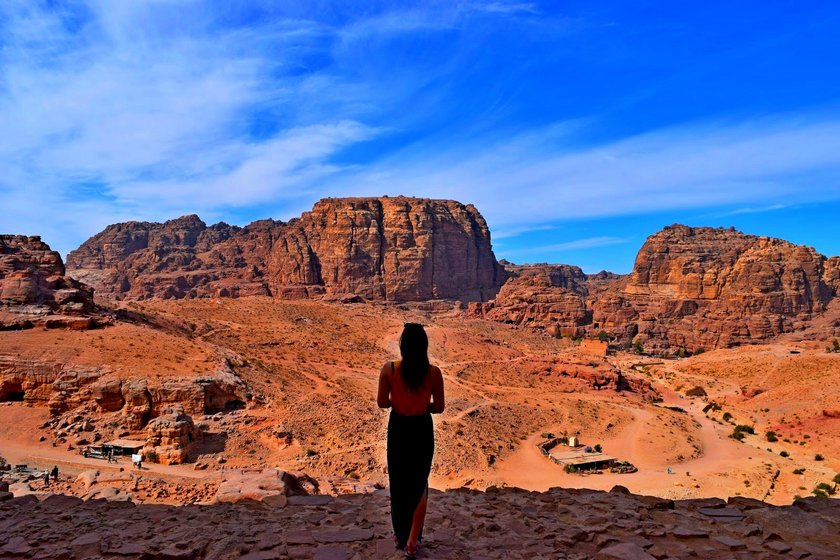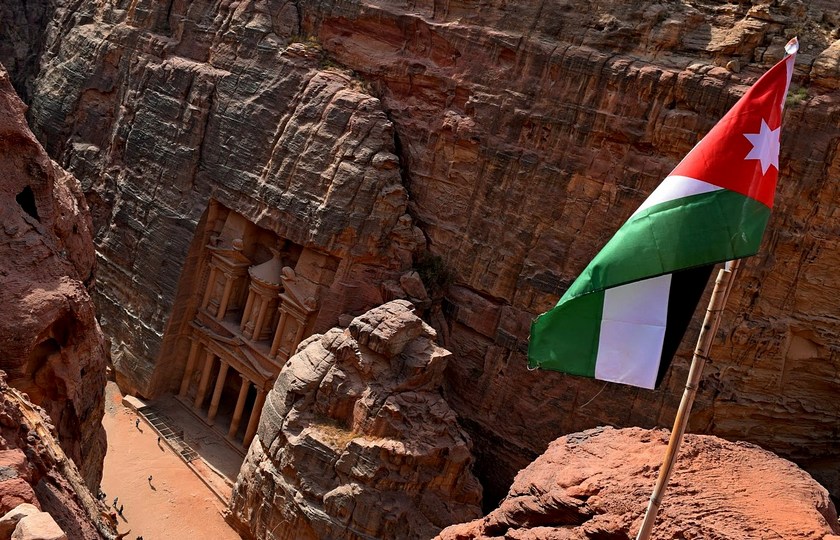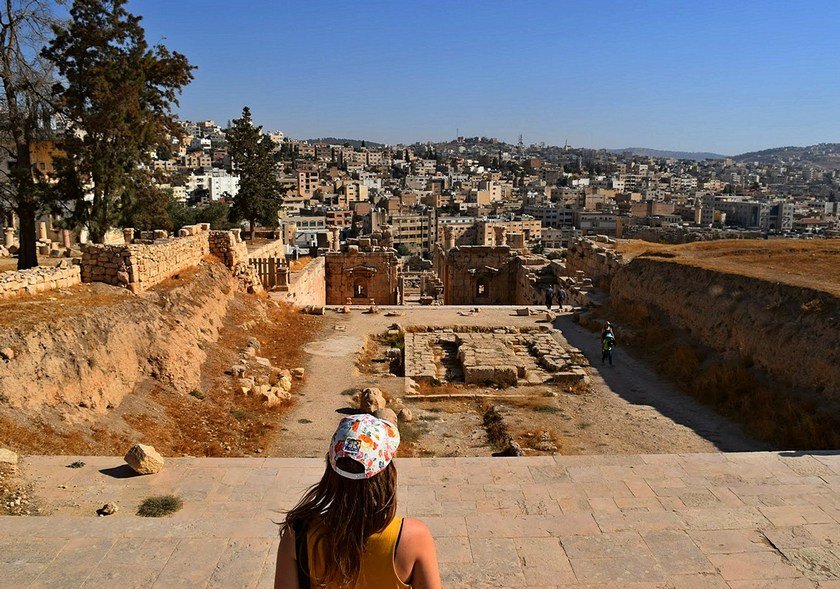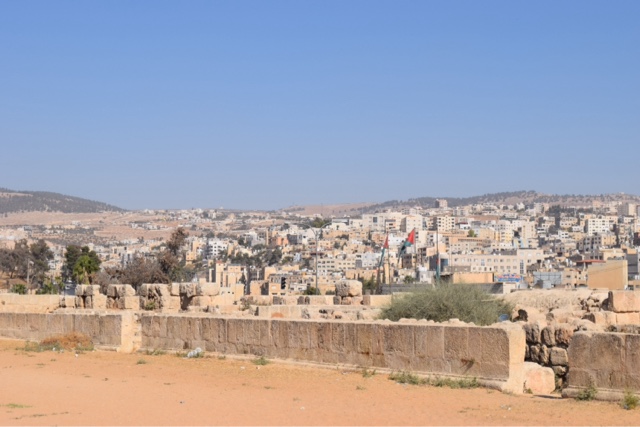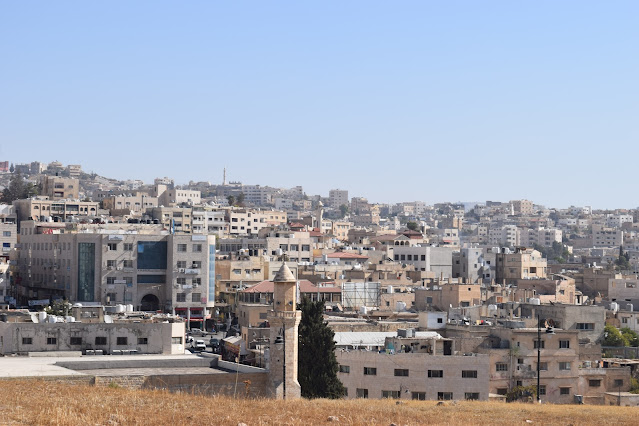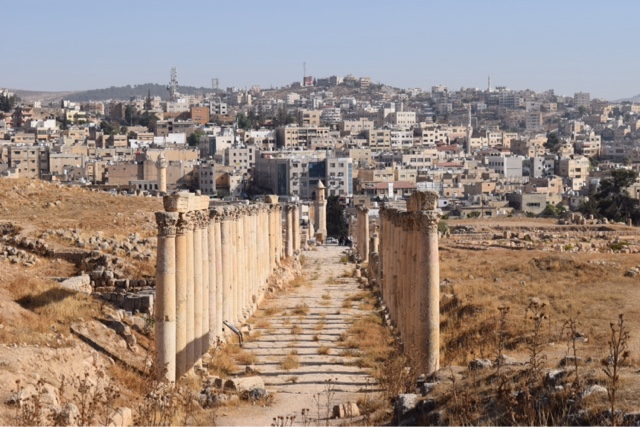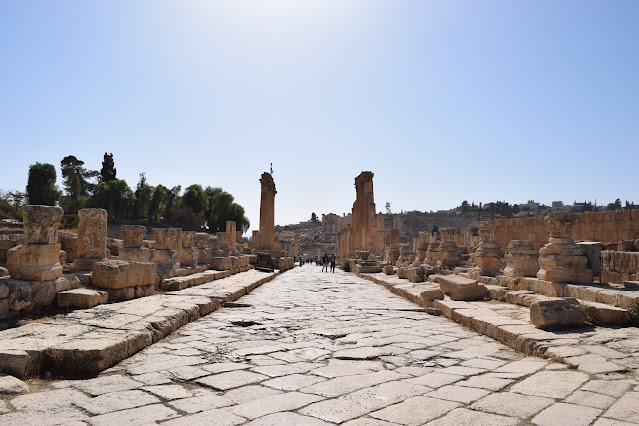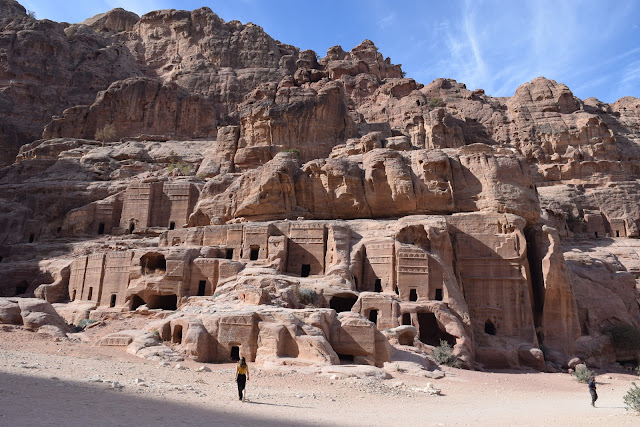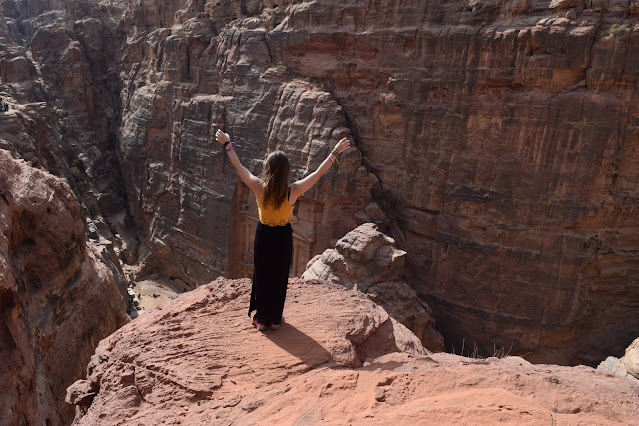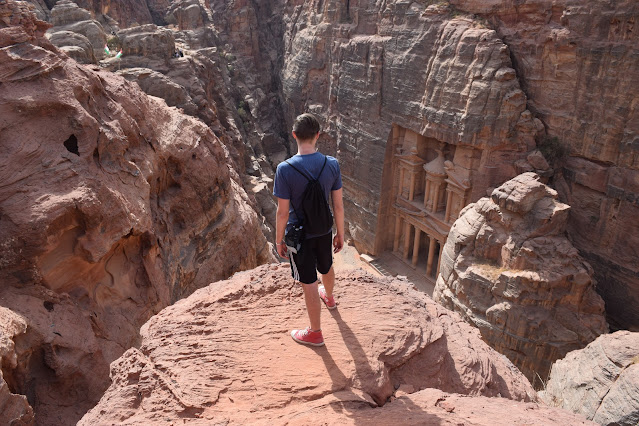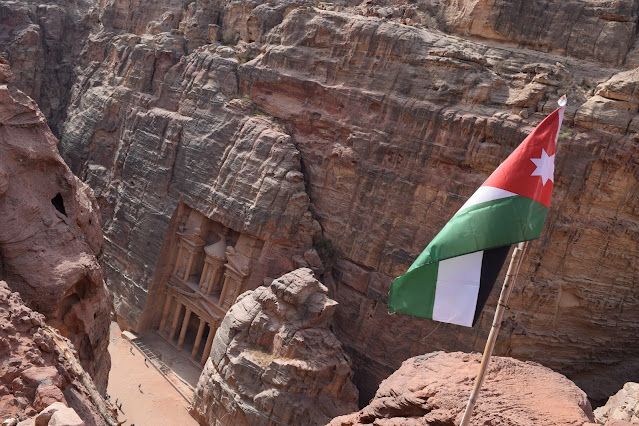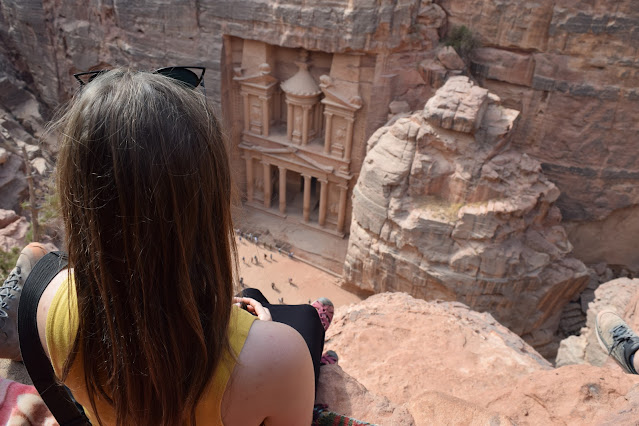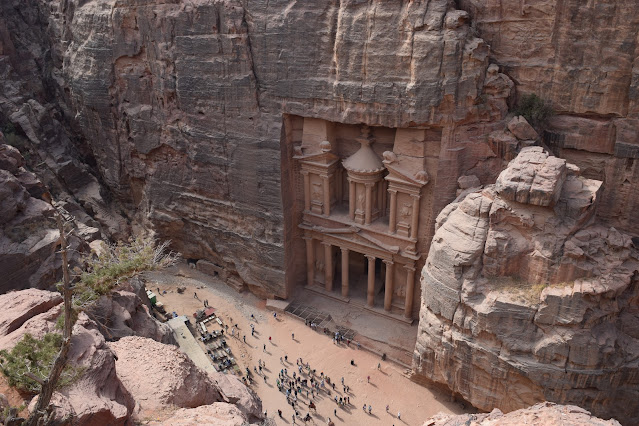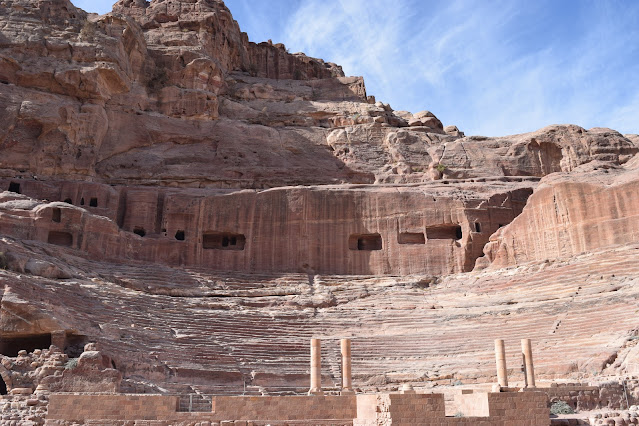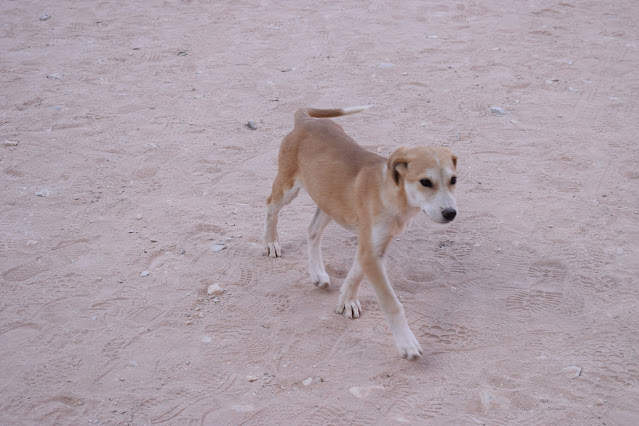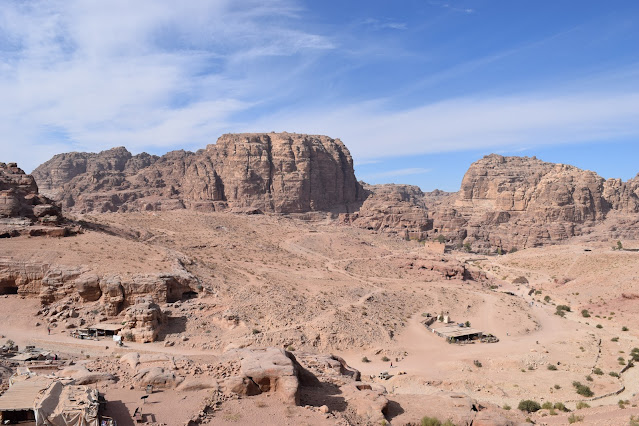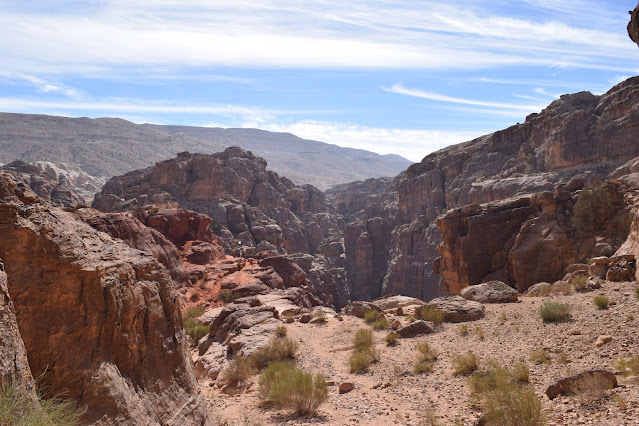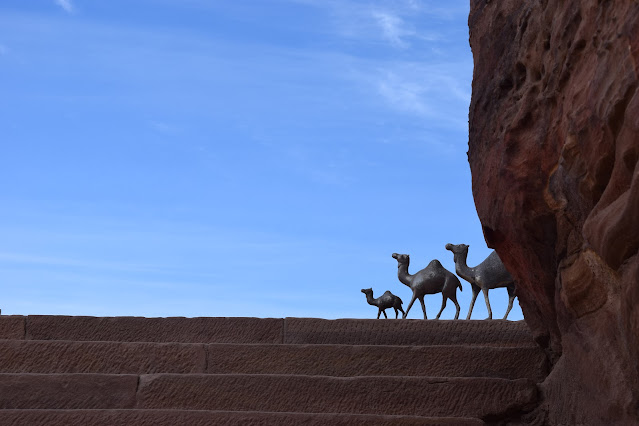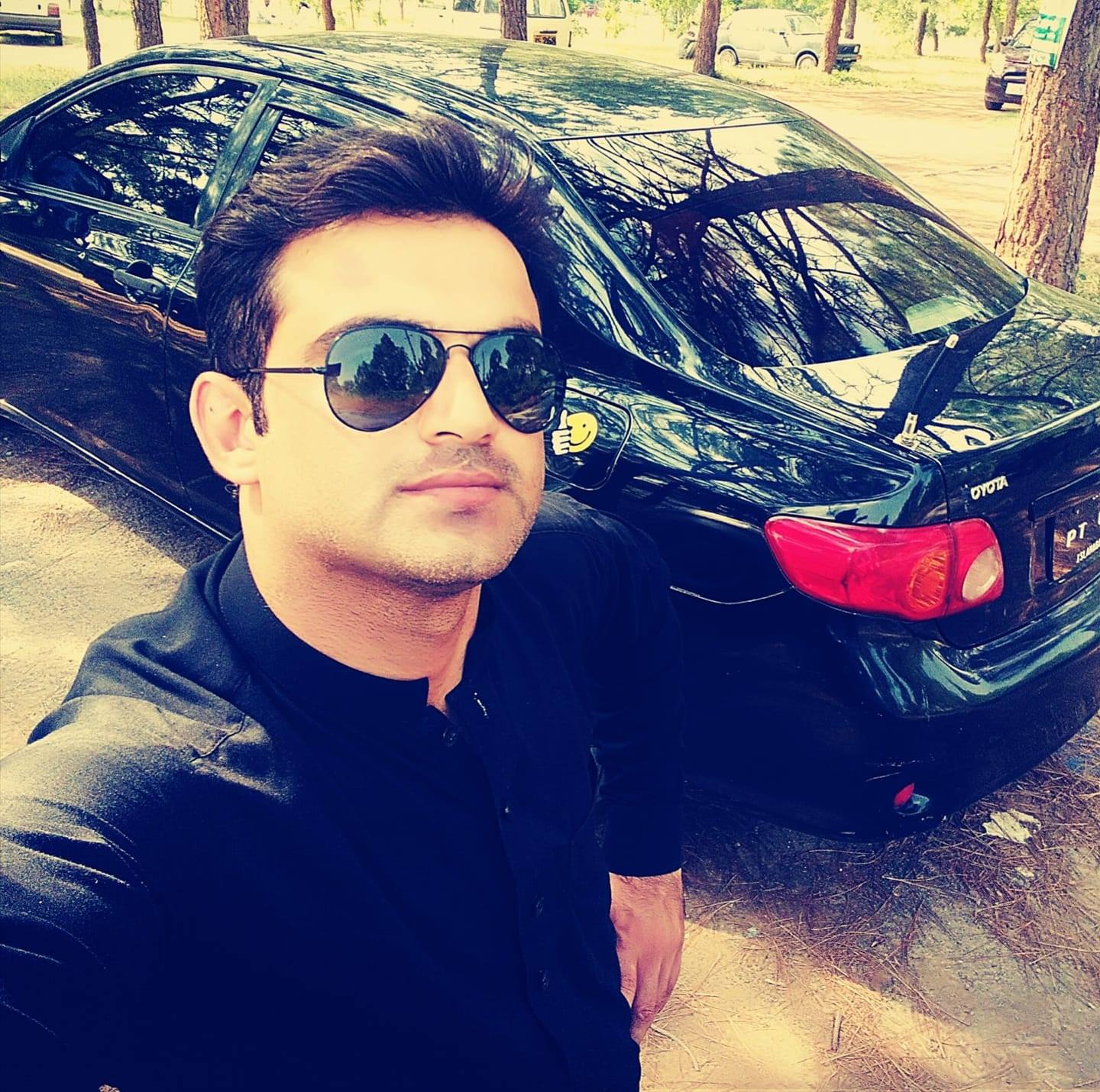Lots of people around the globe want to visit the country of Jordan in order to see the archaeological city of Petra. Some simply because it's one of the 'new seven wonders of the world' and they want to tick off all seven, and others because of the reasons it became one of the seven wonders of the world. Not only is this ancient city incredibly well preserved, it's also vast. This isn't a tiny Mona Lisa that you can see in ten minutes, Petra is so vast that you can, and in my opinion should, spend hours exploring this perfect slice of history.
But beautiful Jordan is so much more than just Petra. The rest of the country is often over-looked in favour of the bucket-list topper. And I firmly believe that that's an oversight. Jordan is ancient Roman ruins at Jerash, it's exciting bustling cities like Amman and it's made up of some of the kindest people I've ever met. Here are 58 photos to show you how beautiful Jordan is, with the intention to hopefully make you want to visit!
Jerash Photos Jordan
Jerash is a city in Jordan, located just 30 miles north of Jordan's capital, Amman. You can get there easily by bus either by booking in advance here on 12go Asia or by buying a ticket at a bus station. The journey takes about an hour and should be about 5 Euros return.
Evidence suggests that people have been living in Jerash since the Neolithic age (so somewhere between 7500-5500 bc). Two skulls were found here that are very special because they are so rare - only 12 other sites across the entire globe have similar human remains. It also stands as some of the largest and best preserved Roman and Byzantine ruins in the world.
What I found interesting is the way that the modern city has grown and expanded next to the ancient ruins, walking down the street on one side you'll have these modern Jordanian buildings made of limestone:
And right next to them on the other side, you'll have the ruins of a Greco-Roman settlement, Gerasa:
I think this clash of modern and ancient architecture is really thought-provoking together:
Which to me means thoughts like 'what is time?', 'have we truly advanced?', 'what does advancement mean anyway?', 'why are we here?', 'who are we?' and 'lol the architectural structures changed hard but the colour is still the same, aesthetics baby' (plus, availability no doubt!)
Anyway, despite only being about 60% excavated, these are still the most well-preserved Roman ruins in the Middle East.
These include the Arch of Hadrian:
A 2nd-century arch erected in honour of Emperor Hadrian's visit (i.e. another waste of energy and working force – read: slave labour – to glorify a tyrant). Then there's the Temple of Artemis, and of course the Oval Plaza:
But there's so much more than that, you can easily spend an afternoon at Gerasa, wandering around and soaking up the history (and the sun rays which, despite it being November when I visited, where potent).
Just be sure to bring water with you! Btw, we do recommend using eco-friendly, reusable water bottles.
With the climate, landscape and ruins it reminded my Euro-centric a$$ at the time of Italy or Greece. Back then I even wrote "you could be forgiven for thinking you were in Italy or Greece". Which I bet the Jordanians would have loved to read (not). Sorry.
But yey! My Italy and Greek vibes were shattered when I saw some clearly not Europeans. Back then I wrote "Jordan is so rich with its own history and culture" having little to no idea what that history or culture was, beyond knowing what the flag was and where the country was (having just learned it...)
More of my old thought: 'Wandering around the Gerasa, we were lucky enough to come across some Jordanians in traditional garb, playing traditional music. Watching them play in the ancient ruins was quite an experience!'
Upon reflection, this was most probably only for us tourists... in case you're wondering how authentic it is for locals to just wander around in the sun playing music in the middle of the day. And truth be told, it wasn't so much an experience, as it was a chance for me to get a shot of something 'authentically Jordanian', something I craved not for authenticities sake but rather to 'look authentic'. Sad to say I didn't even tip these people for their image to improve my image.
Upon reflection, this was most probably only for us tourists... in case you're wondering how authentic it is for locals to just wander around in the sun playing music in the middle of the day. And truth be told, it wasn't so much an experience, as it was a chance for me to get a shot of something 'authentically Jordanian', something I craved not for authenticities sake but rather to 'look authentic'. Sad to say I didn't even tip these people for their image to improve my image.
I concluded back then with 'All in all, Jerash is more than worth a look round, it's just as thought-provoking and intriguing as many Roman/Greek sites that we've seen in Italy/Greece themselves.' More Italian and Greek centralism... I live and I learn, I apologise for being naive and I am grateful that I've had the chance to learn more since.
So what have I learned. Well, one thing that wasn't on my sheltered little white ppl tour of Jerash was information about Jerash camp (which is also known as Gaza camp). Here's a quote from Unicef: 'Jerash camp, home to over 31,000 refugees, is considered the poorest among the ten official Palestinian refugee camps in Jordan, with 52.7 per cent of its residents reporting an income below the national poverty line. This specific population lives under even higher poverty rates than the rest due to several legal restrictions related to their non-citizen status that limit their rights, contribute to their vulnerable living conditions, and adds to the barriers that stand between them and their access to employment opportunities, health care, educational opportunities, and other social services.'
And what can you do about it? Firstly, please learn from my mistakes and learn about a country before you visit. My first introduction to Nakba and the oppression of Palestinians started here with this documentary. Learning about settler-colonial oppression is vital in general but particularly for those wishing to visit Jordan - as Palestinians now make up a large portion of the Jordanian population. The first step is learning about it, then it's up to you to find out what specific talent of yours can be utilised to help others!
So what have I learned. Well, one thing that wasn't on my sheltered little white ppl tour of Jerash was information about Jerash camp (which is also known as Gaza camp). Here's a quote from Unicef: 'Jerash camp, home to over 31,000 refugees, is considered the poorest among the ten official Palestinian refugee camps in Jordan, with 52.7 per cent of its residents reporting an income below the national poverty line. This specific population lives under even higher poverty rates than the rest due to several legal restrictions related to their non-citizen status that limit their rights, contribute to their vulnerable living conditions, and adds to the barriers that stand between them and their access to employment opportunities, health care, educational opportunities, and other social services.'
And what can you do about it? Firstly, please learn from my mistakes and learn about a country before you visit. My first introduction to Nakba and the oppression of Palestinians started here with this documentary. Learning about settler-colonial oppression is vital in general but particularly for those wishing to visit Jordan - as Palestinians now make up a large portion of the Jordanian population. The first step is learning about it, then it's up to you to find out what specific talent of yours can be utilised to help others!
Amman Photos Jordan
Amman is the capital of Jordan, and it too has beautiful ancient ruins. And it has more: 4 million of Jordan's 12 million population live in Amman. This is a city that's exciting and fascinating. Of Jordan's 12 million people, 2 million are refugees, 3/4 from Syria and 1/4 from Iraq. I personally think it's admirable that they've looked after so many people of the world like this. Especially when you consider that Jordan is not a rich country – far from it!
There is no oil in Jordan and it's the 10th worst country in the world for drinking water. The people of Jordan are on a water ration and are only supplied with water once a week. They then store this water in boxes on their roofs which are susceptible to being blown open by the wind and filled with bugs and worse nasties – do not drink the tap water in Jordan!
Jordan is lucky (or unlucky...) to have a good relationship with the USA – they receive a lot of aid including wheat from them. Despite their poor water situation, Jordan has a relatively good healthcare system – there is a medical centre in every town available for all Jordanians. If they are between 6 and 65 they pay just 30% of the medical bill. Everyone else (i.e. younger than 6, older than 65) pays nothing.
90% of Jordan is Muslim and the other 10% is Christian. Our Muslim guide said that there are very good relations between the Muslims and the Christians in Jordan – they respect each other's important festivals and so on, the only real difference they have is that the Christians own all the liquor stores/factories.
90% of Jordan is Muslim and the other 10% is Christian. Our Muslim guide said that there are very good relations between the Muslims and the Christians in Jordan – they respect each other's important festivals and so on, the only real difference they have is that the Christians own all the liquor stores/factories.
Seven Wonders Bedouin Camp Review
To make sure that we reached Petra nice and early the next morning (and to make sure we had a magical, unforgettable night) we stayed at Little Petra Bedouin Camp. I'll tell you, after a day of sightseeing and driving across Jordan, we were ready for some rest and relaxation.
Little Petra Bedouin Camp is the perfect mixture of relaxation and excitement – local flavours and home comforts. For example, they do have hot water, but only in the evening. They serve a traditional dinner and breakfast, and they invite you to share a shisha and stories around the campfire and look at the stars – amazing, thank you very much! When we arrived at night, it was lit up with the light of a thousand fairies candles. In the morning it was still impressive:
With gorgeous, mountainous views all around.
Petra photos Jordan
Last and never least: Petra, the Rose City:
Nicknamed the Rose City because the famous tombs and temples are carved into pink sandstone cliffs:
The most famous one of all, of course, being the Treasury:
For the absolute best views of the Treasury, we recommend the 3.5km "Al-Khubtha Trail" which takes you above the Treasury:
A little further than this, you will find a normal shop with shade, cool drinks and a very good angle to look at the Treasury:
But Petra isn't all about the Treasury, other famous spots to see include the Monastery (Ad-Deir), the Great Temple and the Theatre:
For us, some of the most magical (read non-touristy spots) were anywhere and everywhere in-between, where we met local kids, donkeys and dogs:
Not to forget of course some of the most impressive landscapes we've seen in our lives:
At Petra, there are people selling trinkets, and often kids were trying to sell us things too. They were some of the cutest kids on the planet, but child labour is child labour (not cool). We've always been told it's best not to support this by buying from them or giving them anything :(
It's not out of poverty that these kids work – they actually earn more than a Jordanian national average salary – they work because of habit, family organisation, because they hate school (organized miseducation of the masses) and because of a lack of other things to do. If you actually want to help consider donating to reputable charities like Save The Children. If you do buy souvenirs, make sure they are from reputable sellers.
The other ethical problem with Petra is the animal riding – you can ride a donkey, a horse, a horse-drawn carriage or even a camel at Petra, for veryyy "reasonable" prices. We do not agree with any kind of animal exploitation and whilst these animals were far from the worst treated animals we've seen around the world (most of them looked pretty healthy), we still saw them being whipped. Not cool! If you ride them, you are supporting animal cruelty, end of.
But on a positive note, there used to be a lot of people that actually lived in Petra. Later, when it became a UNESCO world heritage site + one of the new seven wonders of the world, these locals were asked to move to a village nearby built for them. But the people didn't want to move out and risk losing business at Petra. So, in the end, it was settled that they'd move out, and would be the only ones allowed to make business in Petra. Now that's nice, isn't it? Locals vs. centralised power 1-0.
One last thing: Petra is surprisingly comfortable to spend the day at. The temperatures in Jordan are sweltering pretty much all year round, but in Petra the mountains and rocks provide shade and neither of us got sunburnt/stroke – yey!
Wrap Up: Why Visit Jordan?
So there you have it, 58 photos that will hopefully convince you to visit beautiful Jordan. Have you been to Jordan? What did you think? And if you haven't been, has this post convinced you? :)
P.S.: If you're interested in a way of travelling and getting accommodation cheaply, you might wanna check out house sitting. Trustedhousesitters.com was kind enough to provide us and our readers with a 10% discount, feel free to click on the link to use it :)

